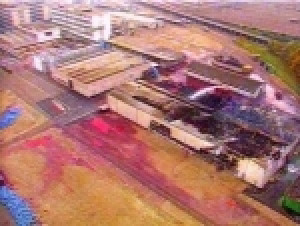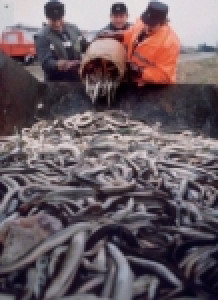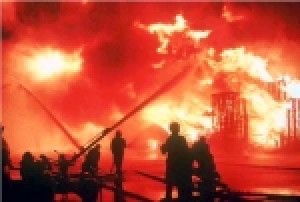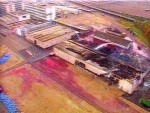A fire broke out within a warehouse (depot 956) containing phytosanitary products south of Basel. The first responders had been on the scene for 20 min. when fire-fighting teams from neighbouring sites arrived to provide backup. The 80-m high flames were visible more than 10 km away. Thiols in the smoke spread a rotten egg smell, and the Rhine was heavily polluted. Since the retention basin set up onsite was limited to a capacity of 50 m³ of effluents, between 10 and 15,000 m³ of the millions of l of fire water used to douse the flames spilled for 28 h via the wastewater network into the river ; 30 t of toxic products (insecticides, mercury ) destroyed all aquatic life over a radius on 250 km. The time lapse between the beginning of the accident and the warning announced to Basel residents and bordering countries outraged public opinion. Since, local operations centres have established their own procedures. A new safety & environment organisation was implemented by the industrial group, allocating backup human and equipment resources per each operating division. On November 12, the Environment Ministers of countries affected by the disaster gathered in Zurich to persuade the Swiss government to enact legislation similar to the Seveso Directive for classified facilities, in addition to financing the river reclamation project. Switzerland wound up passing legislation resembling Seveso, thus improving safety at industrial sites and facilitating information flow between adjoining countries in the event of accident. On 10/01/1987, the International Rhine River Protection Commission (CIPR) adopted Rhine Action Program 2000, an ambitious plan aimed at restoring river quality. The cost of these environmental cleanup and rehabilitation measures exceeded €39 million. The CIPR now operates 6 warning stations that continuously monitor a section of the Rhine with 2 additional stations assigned to the Moselle River. This disaster also initiated creation of France’s SAGE & SDAGE water planning and management agencies. The accident was caused by the ignition of a pallet containing “Prussian blue” compound. Tests conducted indicated that this powder, made from iron salts and potassium ferrocyanide with a relatively low flashpoint (230 °C), could smoulder for several hours without emitting any odour before igniting. Since this substance had been designated for storage under special conditions, the pallets were wrapped in a thermo-retractable plastic. This packing operation took place outside and was followed by a half-day of outdoor exposure; such a practice was intended to identify the onset of combustion and avoid storage adjacent to other toxic/inflammable products in depot 956. Ten tonnes were packaged on October 30 inside the depot, using a 30-cm sheet of thermoforming material; the product was then stored near 83 t of highly flammable and toxic insecticide & herbicide.
Download the detailed report in .pdf format (500 Kb)







